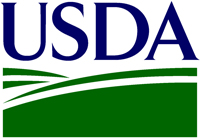 The National Ground Water Association’s technical journal, Groundwater Monitoring & Remediation®, has published a special issue focusing on the monitoring and remediation of agricultural impacts to groundwater quality.
The National Ground Water Association’s technical journal, Groundwater Monitoring & Remediation®, has published a special issue focusing on the monitoring and remediation of agricultural impacts to groundwater quality.
Agricultural land use represents the largest nonpoint source threat to groundwater quality on a global scale. As a result of decades of fertilizer application and surface spreading of animal manure, chronic increases in nitrate concentrations have been documented within the shallow and deep groundwater environments, and with increasing frequency in both private and public supply wells.
Beneficial management practices (BMPs) designed to reduce the risk of groundwater quality impacts are being adopted worldwide, yet very little data are available to assess the performance of these BMPs.
The special issue, which comprises the Groundwater Monitoring & Remediation Winter 2015 issue, is a coordination of recent research results from a team of more than 40 authors who have expertise in the area of agricultural BMP design, performance assessment, and field monitoring in the agricultural landscape.
Their collective research findings “…highlight the understanding that can be gleaned from careful monitoring of field sites where nutrient BMPs have been implemented, and demonstrate the necessity of long-term monitoring programs in these settings,” says Neil Thomson, Ph.D., the editor-in-chief of Groundwater Monitoring & Remediation.
The guest editor of this special issue was David L. Rudolph, Ph.D., PE, who presented the 2013 National Ground Water Research and Educational Foundation’s Henry Darcy Distinguished Lecture in Groundwater Science, “Managing Groundwater Beneath the Agricultural Landscape.”










